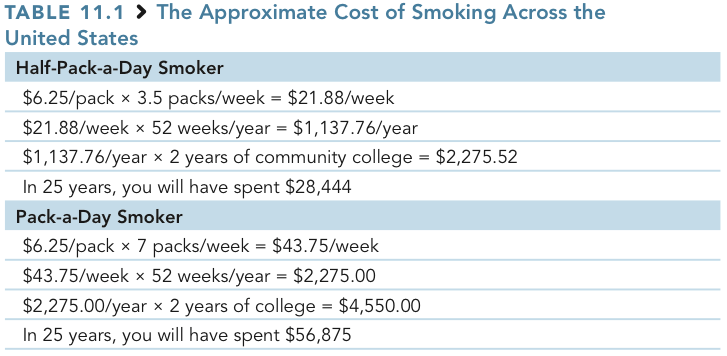Substance Abuse
In this section, our purpose is not to make judgments, but to warn you about the ways in which irresponsible use of substances can have a major negative impact on your college experience and your life. We hope that this information will help you think twice and avoid the trouble that can come from all forms of substance abuse.
In today’s world, it is easy to obtain substances, both legal and illegal, that can cause serious harm to your health and well-being. For college students, the substances most commonly used and abused are tobacco, alcohol, and marijuana. While smoking tobacco is not illegal, smoking marijuana is against federal law and state laws in most states.
Alcohol Throughout the history of higher education, the drug most used by students has been alcohol. Whether you drink or not, this is important information to read. Many college students have reported helping a drunken friend or classmate. Most college students think that the average student drinks twice as much as they actually do. A number of surveys have confirmed that your peers aren’t drinking as much as you think they are.
People experience the pleasurable effects of alcoholic beverages as the alcohol begins to affect several areas in the brain. How fast you drink makes a difference to how strong the effects become. Your body gets rid of alcohol at a rate of about one drink an hour. Drinking more than one drink an hour might cause a rise in blood alcohol content (BAC)—a measure of how much alcohol is in the bloodstream—because the body is absorbing alcohol faster than it can eliminate it.
At BAC levels of .025 to .05, a drinker tends to feel animated and energized. At a BAC level of around .05, a drinker can get loud. This is where most people report feeling a buzz from alcohol. At a BAC level between .05 and .08, alcohol starts to act as a depressant. So as soon as you feel that buzz, remember that you are on the brink of losing coordination, clear thinking, and judgment. Driving is measurably impaired at BAC levels lower than the legal limit of .08. Most people become severely uncoordinated with BAC levels higher than .08 and might begin falling asleep, falling down, or slurring their speech. People try home remedies (such as coffee, water, or cold showers) for helping to sober someone up, but time is the only remedy because your liver can metabolize only one ounce of alcohol per hour.
Tobacco Tobacco is a legal drug that contains nicotine, a highly addictive substance—and is the cause of many serious medical conditions, including heart and lung diseases and some forms of cancer. One concern that particularly relates to college students is social smoking. This term describes smoking by students who do so only when hanging out with friends, drinking, or partying. Most college students feel they will be able to give up their social smoking habit once they graduate, but some find that they have become addicted to cigarettes.
You may have noticed advertisements for electronic cigarettes (e-cigarettes or e-cigs) or seen them in stores. According to the U.S. Food and Drug Administration, e-cigarettes are battery-operated products designed to deliver nicotine, flavors, and other chemicals in the form of vapor. E-cigarettes, have not been fully studied, so consumers currently don’t know the potential risks.
Although only a small percentage of college students use smokeless tobacco, the habit is no less addicting than smoking is. One dip delivers the same amount of nicotine as three to four cigarettes. Smokeless tobacco contains 28 known cancer-causing substances and is associated with the same level of health risk as cigarette smoking.
A final reason for smokers to quit, or for others never to start, is the cost (see Table 11.1). Contact your campus health or counseling centers for more information about quitting.
